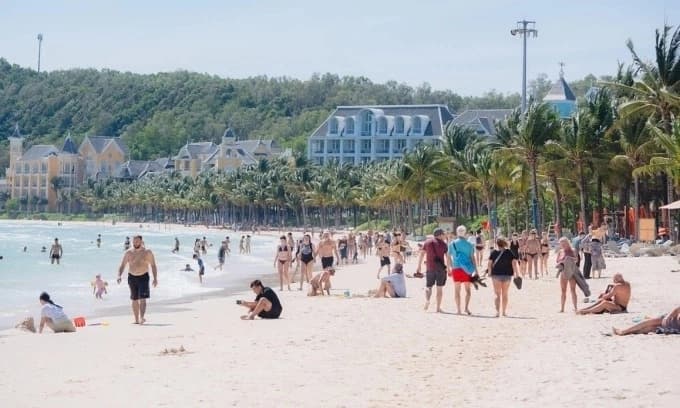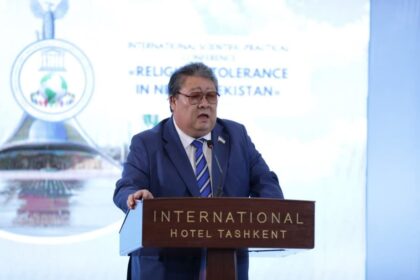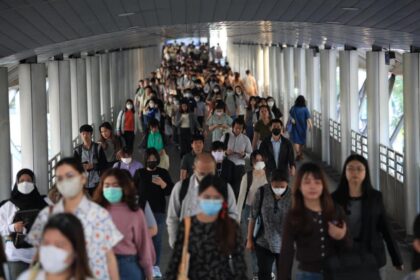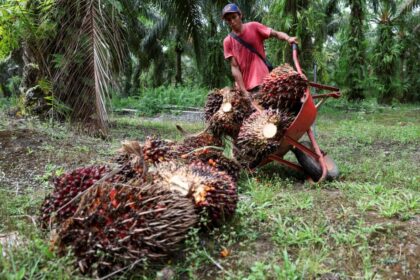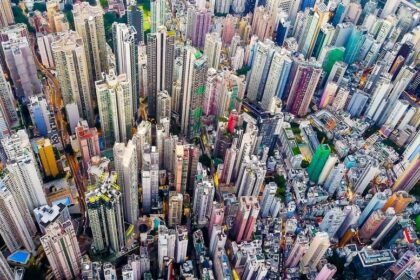Eastern European demand surges for Vietnam island escape
Phu Quoc Island has grabbed the attention of Eastern European travelers at a pace few destinations can match. Searches from these markets for stays on the island jumped 113 percent compared with the previous year during a recent booking window, according to data from online travel platform Agoda. The surge covered searches made between August 15 and September 30 for check-ins in October and November, a key shoulder period that previews winter travel patterns. Hanoi ranked second in searches, followed by Ho Chi Minh City, Da Nang, and Nha Trang, rounding out a diverse list of urban and coastal options across Vietnam.
- Eastern European demand surges for Vietnam island escape
- Why Phu Quoc stands out
- Visa changes and access
- Flights from Russia and the CIS reshape the winter season
- How the rest of Vietnam ranks
- What search data tells us and what it does not
- Infrastructure, new airlines and investment
- On the ground experiences Eastern Europeans are booking
- Challenges and sustainability efforts
- Key Points
The spike in interest matches what Vietnam’s official statistics show across the continent. The General Statistics Office reported that visitors from Europe to Vietnam rose nearly 35 percent in the first nine months of 2025. In the third quarter alone, the country welcomed 568,370 European travelers, up 38 percent from the second quarter and 60 percent compared with the same period last year. Phu Quoc has been a major beneficiary. The island received about 1.2 million foreign arrivals from January through September, up 65.8 percent compared with the previous year and already above its target for the full year.
Part of Phu Quoc’s appeal for Eastern European visitors is simple geography and climate. As temperatures drop across the continent, the island offers warm seas, long beaches, and protected forests that are ideal for rest and recreation. The winter travel season in Eastern Europe often favors sunny escapes, and Vietnam’s largest island has become a clear candidate thanks to convenient air links and competitive prices.
Phu Quoc’s momentum also reflects growing air connectivity from Russia and other parts of Eastern Europe and Central Asia during the winter months. Charter programs and seasonal routes are expanding capacity through the end of 2025 and into early 2026. Recognition from international readers has further lifted the island’s profile. It was named the most beautiful island in Asia this year by Condé Nast Traveler readers, adding to an earlier nod from Travel + Leisure readers who placed it among the most beautiful islands in the world.
Why Phu Quoc stands out
Phu Quoc offers a mix of assets that resonate with Eastern European travelers. There are more than a dozen beaches with gentle surf and shallow waters, coral reefs for snorkeling, and a largely forested interior protected as a national park. The combination of accessible nature, a broad hotel range, and a compact footprint makes it easy for visitors to settle in and explore.
Visitors can ride one of Asia’s most dramatic cable cars to Hon Thom (Pineapple Island), spend a day at large theme and water parks, play golf, or unwind at luxury resorts spread across the north and south coasts. Families find a wide menu of activities, from wildlife encounters at a safari park to safe beach days and evening markets. Couples can choose quiet coves, spa programs, and sunset cruises. The island’s culinary scene is a draw in its own right, with fresh seafood and local specialties like pepper, sim wine, and the fish sauce that bears the island’s name.
For travelers planning around value and convenience, Phu Quoc often compares well with tropical competitors in the region. Frequent domestic connections, growing links to Asian hubs, and seasonal charters from Eastern Europe reduce total travel time and lower the number of transfers. Package offerings also make budgeting straightforward, which is attractive to families and group travelers from Europe.
Visa changes and access
Vietnam’s recent entry policy updates lowered barriers for European travelers. From mid August, the government expanded visa exemption for citizens of a group of European countries and simplified procedures for others through a broader e-visa system. Agoda’s analysis of searches highlights strong growth from Eastern European markets during the same period, including Slovenia (up 77 percent), Poland (74 percent), Bulgaria (72 percent), Romania (69 percent), and Slovakia (61 percent).
Phu Quoc has a unique policy on top of national rules. Tourists of any nationality can visit the island visa free for up to 30 days if they enter directly and remain on the island. This helps many travelers who prefer a nonstop or charter arrival without an extra administrative step, particularly during the winter peak.
Combined with improved flight options, these policies reduce friction at the planning stage. Easier entry makes last minute decisions more viable, which is common in the winter travel window for Eastern European markets where weather and school schedules can drive spontaneous bookings.
Flights from Russia and the CIS reshape the winter season
Phu Quoc is preparing for a strong winter schedule from Russia and the Commonwealth of Independent States. Local authorities and tour operators have coordinated a charter program expected to bring more than 60,000 visitors during the 2025 to 2026 winter period. Plans call for departures from 14 cities across Russia and CIS markets, with an estimated 75 to 80 flights each month. The first charter of the season landed on October 19 from Vladivostok with 220 passengers, signaling a robust start to the peak months.
Beyond Russia, airlines and tour companies are marketing direct or one-stop routes from Poland, Kazakhstan, Uzbekistan, the Czech Republic, Slovakia, and Mongolia. These connections target travelers seeking a warm beach break without complex itineraries. Frequency typically rises from late autumn through early spring, matching school holidays and winter escape demand. Carriers are also using fuel efficient narrowbody aircraft on medium range routes, which helps open new city pairs that align with leisure travel budgets.
Expanded winter charters change the visitor mix on the island. Russians and other Eastern Europeans staying a week or longer often split time between beach relaxation and day trips, which supports a wide set of local businesses. Reliable lift also gives hotels confidence to staff up and run full programming, from kids clubs to evening shows, which improves the visitor experience.
How the rest of Vietnam ranks
Searches from Eastern European travelers also point to strong interest in major Vietnamese cities. Hanoi ranked second, with search growth of 77 percent compared with last year, reflecting demand for heritage sites, street food, and day trips to nearby landscapes. Ho Chi Minh City came next, up 56 percent, driven by nightlife, shopping, and proximity to the Mekong Delta.
Da Nang and Nha Trang rounded out the top five, up 36 percent and 35 percent respectively. Both cities offer beaches and resort stays, along with easy access to nearby attractions. The spread in preferences suggests Eastern Europeans are balancing urban culture with coastal downtime, often pairing a city break with a few days on the sand.
What search data tells us and what it does not
Searches are a strong early signal of demand, but they are not the same as tickets sold or hotel rooms booked. That said, the Agoda data aligns with official numbers through the third quarter of 2025, which show a steep climb in European arrivals to Vietnam and a clear outperformance by Phu Quoc compared with its targets.
When searches, airline schedules, and government arrival data move in the same direction, the picture becomes clearer. The 35 percent rise in European arrivals during the first nine months of 2025 and the 60 percent rise in the third quarter compared with last year suggest a durable recovery and growing appetite for Vietnam among European travelers at the end of the year.
Infrastructure, new airlines and investment
Local leaders are leaning into the island’s tourism potential with infrastructure upgrades and planning. Phu Quoc is renovating urban areas, building new roads, and expanding resort zones to support growing traffic. Authorities are also working on an airport expansion to serve major events in the coming years and to keep up with international arrivals.
New air capacity is set to help. A new full service airline, Sun PhuQuoc Airways, has received an air transport license and is preparing to begin commercial operations with a focus on leisure routes and charter services. Early plans center on Airbus A321neo aircraft, which can cover medium range routes that connect Phu Quoc with cities across Asia and open the door to service targeting Eastern Europe and Central Asia. The airline aims to link flights with on-island resorts and entertainment, giving tour operators a seamless product for package travelers.
Improved connectivity reduces travel time and uncertainty, which is decisive for families booking winter sun trips from Eastern Europe. Reliable schedules make multi stop itineraries less necessary and move Phu Quoc higher on the list when travelers compare options.
On the ground experiences Eastern Europeans are booking
Marine activities top the list. Snorkeling trips to coral gardens, scuba diving courses for beginners, and island hopping to quiet beaches are popular with both families and couples. Calm seas in the dry season (November to April) give first time snorkelers and children the chance to enjoy the water safely. Kayaking in mangroves and stand up paddleboarding at sunrise are also trending.
Families gravitate to large attractions, including a safari park and an aquarium, along with beach clubs and kids programs at resorts. The cable car to Hon Thom delivers sweeping sea views and access to a beach and amusement zone, while the Italian inspired Sunset Town offers restaurants, photo spots, and evening shows that anchor a fun night out without long transfers.
Cultural stops add variety to beach days. Dinh Cau Temple is a classic viewpoint at sunset. Markets in Duong Dong offer seafood dinners and local snacks. Visitors can tour fish sauce factories, pepper farms, and pearl farms to see the island’s craft traditions. The mix gives travelers room to build itineraries that balance rest with discovery.
Challenges and sustainability efforts
Rapid growth creates pressure on the environment and public services. Waste management is a known challenge, especially during the windy period when currents push trash onto some eastern beaches. Many resorts clean their frontages daily, and local initiatives organize beach cleanups and recycling drives. Conditions on popular beaches are typically best during the dry season, when winds are calmer and seas are clearer.
Authorities and local businesses are promoting greener practices and diversifying products to spread visitor flows. Events and seminars focused on low emission tourism have been held this year, and hospitality providers are developing Muslim friendly services to welcome travelers from the Middle East. Better planning, steady enforcement, and community participation will be vital to keep nature intact while the visitor base grows.
Travelers can help by choosing operators that follow responsible guidelines, avoiding single use plastics, and respecting protected areas. Timing also matters. The dry season from November to April offers the best sea conditions, while the rainy season still works for travelers who prioritize lower prices and quieter beaches.
Key Points
- Searches from Eastern Europe for Phu Quoc rose 113 percent during a recent booking window, based on Agoda data.
- Hanoi, Ho Chi Minh City, Da Nang, and Nha Trang followed Phu Quoc in Eastern European search rankings.
- Phu Quoc welcomed about 1.2 million foreign visitors from January to September 2025, up 65.8 percent compared with last year.
- European arrivals to Vietnam climbed nearly 35 percent in the first nine months of 2025, with a 60 percent year over year jump in the third quarter.
- Charters from Russia and CIS cities are set to bring more than 60,000 visitors in the 2025 to 2026 winter period, with 75 to 80 flights each month.
- Vietnam expanded entry policies in mid August, and Phu Quoc offers a 30 day visa free stay for visitors who enter directly and remain on the island.
- New capacity from a leisure focused airline and airport upgrades aim to improve access and reduce travel time.
- Eastern European travelers are choosing marine activities, family attractions, and cultural experiences that fit weeklong beach breaks.
- Local initiatives target greener operations, but visitors should be mindful of seasonal conditions and support responsible operators.


